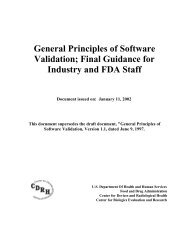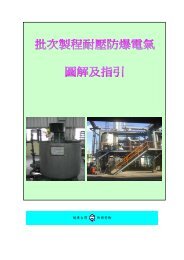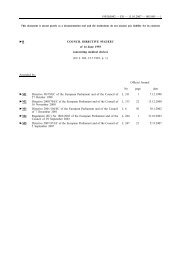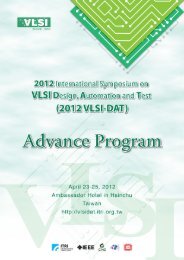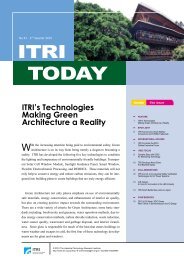Design Control Guidance - Food and Drug Administration
Design Control Guidance - Food and Drug Administration
Design Control Guidance - Food and Drug Administration
Create successful ePaper yourself
Turn your PDF publications into a flip-book with our unique Google optimized e-Paper software.
SCOPE AND LEVEL OF DETAIL. <strong>Design</strong> input requirements must becomprehensive. This may be quite difficult for manufacturers who are implementing asystem of design controls for the first time. Fortunately, the process gets easier withpractice. It may be helpful to realize that design input requirements fall into threecategories. Virtually every product will have requirements of all three types.• Functional requirements specify what the device does, focusing on the operationalcapabilities of the device <strong>and</strong> processing of inputs <strong>and</strong> the resultant outputs.• Performance requirements specify how much or how well the device mustperform, addressing issues such as speed, strength, response times, accuracy, limitsof operation, etc. This includes a quantitative characterization of the useenvironment, including, for example, temperature, humidity, shock, vibration, <strong>and</strong>electromagnetic compatibility. Requirements concerning device reliability <strong>and</strong>safety also fit into this category.• Interface requirements specify characteristics of the device which are critical tocompatibility with external systems; specifically, those characteristics which arem<strong>and</strong>ated by external systems <strong>and</strong> outside the control of the developers. Oneinterface which is important in every case is the user <strong>and</strong>/or patient interface.What is the scope of the design input requirements development process <strong>and</strong> how muchdetail must be provided? The scope is dependent upon the complexity of a device <strong>and</strong> therisk associated with its use. For most medical devices, numerous requirementsencompassing functions, performance, safety, <strong>and</strong> regulatory concerns are implied by theapplication. These implied requirements should be explicitly stated, in engineering terms,in the design input requirements.Determining the appropriate level of detail requires experience. However, some generalguidance is possible. The marketing literature contains product specifications, but theseare superficial. The operator <strong>and</strong> service manuals may contain more detailedspecifications <strong>and</strong> performance limits, but these also fall short of being comprehensive.Some insight as to what is necessary is provided by examining the requirements for a verycommon external interface. For the power requirements for AC-powered equipment, it isnot sufficient to simply say that a unit shall be AC-powered. It is better to say that theunit shall be operable from AC power in North America, Europe, <strong>and</strong> Japan, but that isstill insufficient detail to implement or validate the design. If one considers the situationjust in North America, where the line voltage is typically 120 volts, many systems arespecified to operate over the range of 108 to 132 volts. However, to account for thepossibility of brownout, critical devices may be specified to operate from 95 to 132 voltsor even wider ranges. Based on the intended use of the device, the manufacturer mustchoose appropriate performance limits.There are many cases when it is impractical to establish every functional <strong>and</strong> performancecharacteristic at the design input stage. But in most cases, the form of the requirement canbe determined, <strong>and</strong> the requirement can be stated with a to-be-determined (TBD)numerical value or a range of possible values. This makes it possible for reviewers toSection C. <strong>Design</strong> Input 3/11/97 Page 16



